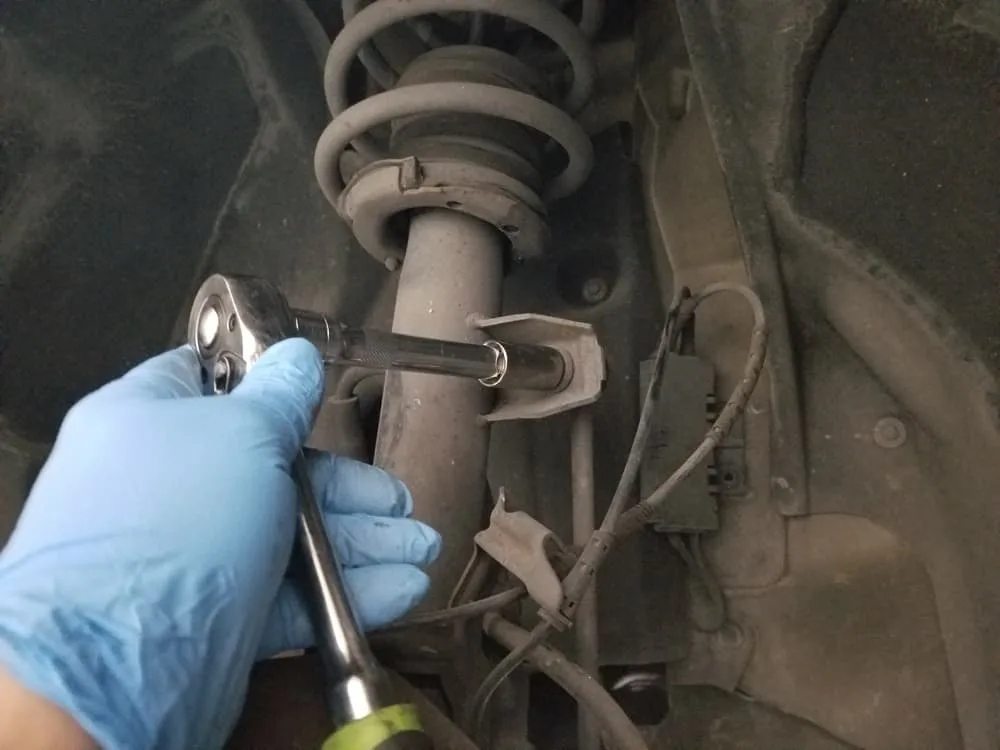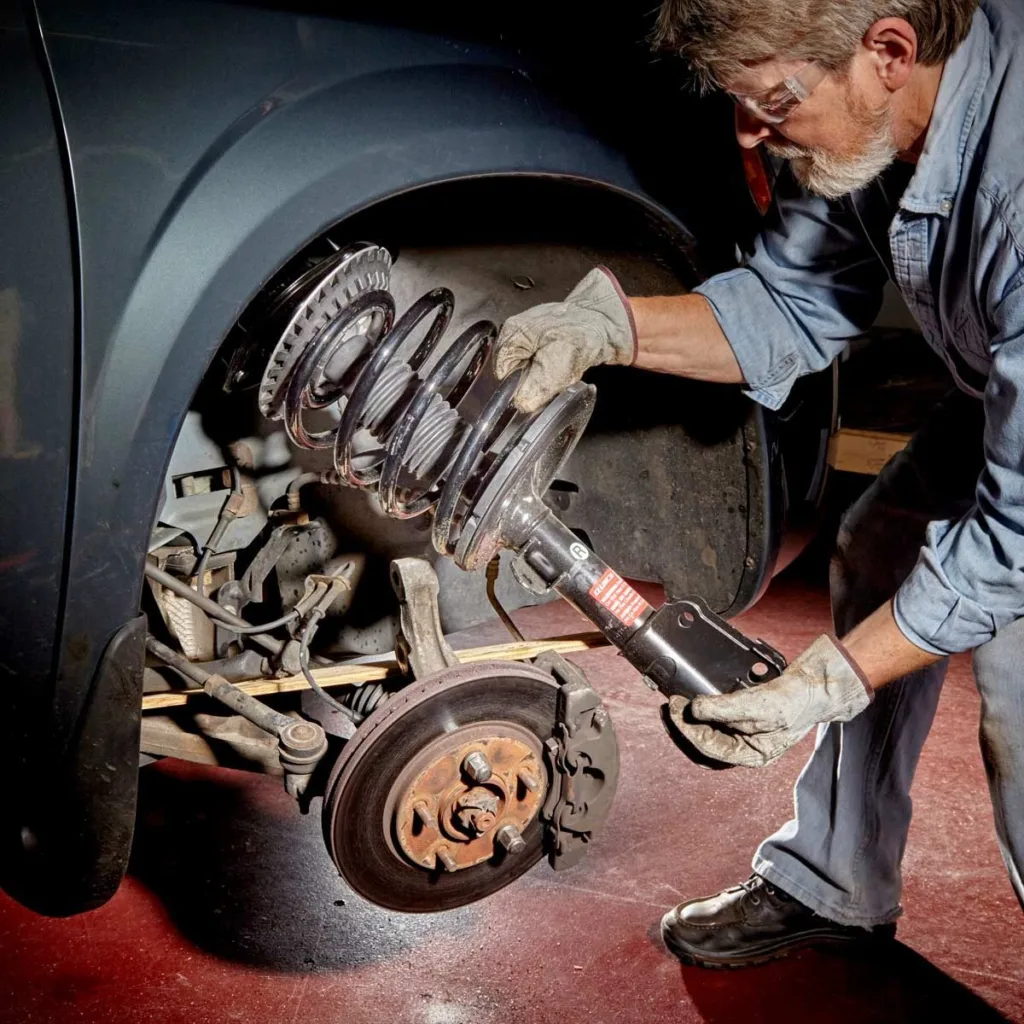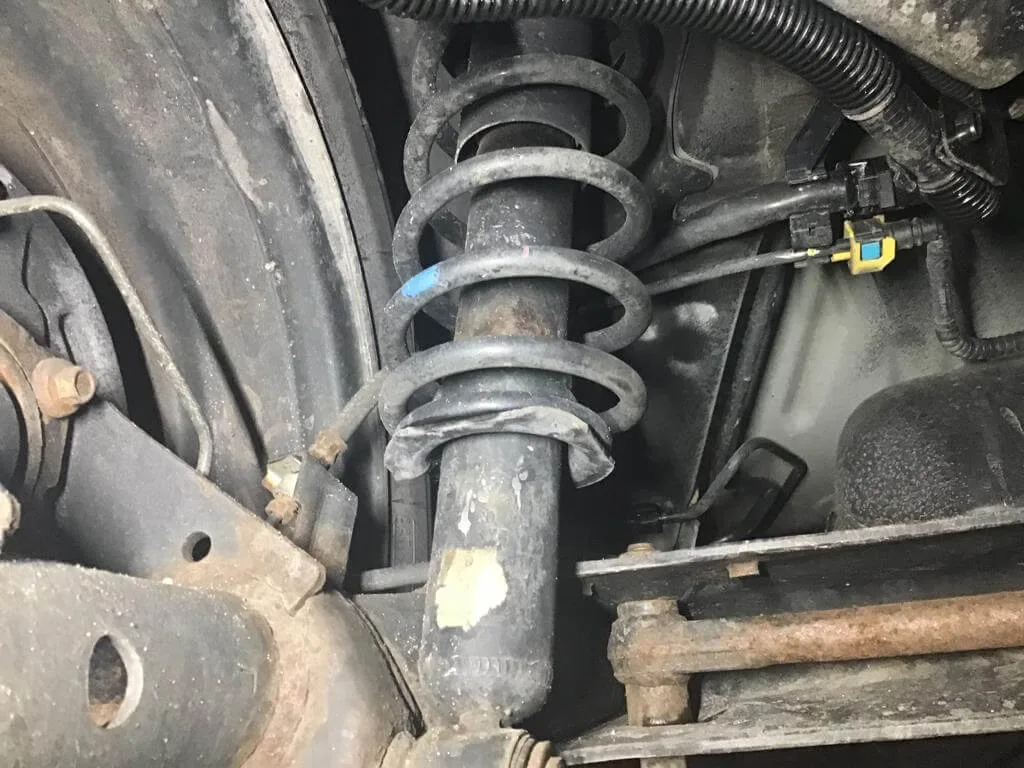Last updated on March 6th, 2024 at 04:52 pm
Are you facing the headache of bad struts in your vehicle? No worries – we’ve got the perfect solution for you! When your car’s suspension starts acting up, a temporary fix for bad struts can save the day
In this comprehensive guide, we’ll delve into the world of temporary solutions for bad struts, offering simple yet effective techniques to address this issue promptly.
From identifying signs of worn-out struts to exploring DIY repair methods and precautionary measures, we’ll cover it all. Whether you’re experiencing uneven tire wear, excessive bouncing, or other symptoms, our aim is to provide you with practical insights and solutions.
So, let’s dive in and discover how to implement a temporary fix for bad struts to get you back on the road with confidence.
Temporary Fix for Bad Struts
Understanding the Problem: What Are Bad Struts?
Before we dive into the temporary fixes, let’s take a moment to understand what exactly we’re dealing with. Struts are a critical component of your vehicle’s suspension system, responsible for absorbing shocks and providing support to ensure a smooth ride.
When struts go bad, they can cause a range of issues, including excessive bouncing, uneven tire wear, and decreased stability while driving.
Common signs of bad struts include:
- Bouncing or excessive movement over bumps and uneven surfaces.
- Uneven tire wear, indicating poor suspension alignment.
- A rough or uncomfortable ride, often accompanied by noise or vibration.
- Instability or swaying while cornering or maneuvering.
The Importance of Addressing Bad Struts Promptly
While a temporary fix may provide a quick solution to alleviate some of the symptoms of bad struts, it’s essential to understand that these are just band-aid solutions.
Temporary fixes should only be used as a stop-gap measure until you can address the underlying issue with a more permanent repair or replacement. Ignoring bad struts can lead to further damage to your vehicle’s suspension system, increased wear on other components, and even compromised safety on the road.
Temporary Fix #1: Adjusting Tire pressure

Adjusting tire pressure can be a quick and easy solution to mitigate the effects of bad struts on your vehicle’s ride quality.
Begin by inspecting your tires and checking their air pressure using a tire pressure gauge. Ensure that the pressure matches the recommended levels specified by the manufacturer, which can typically be found on a sticker inside the driver’s side door jamb or in the owner’s manual.
Proper tire inflation is crucial for several reasons. Firstly, it helps distribute the vehicle’s weight evenly across the tires, which can help compensate for the reduced support provided by worn struts.
Additionally, maintaining the correct tire pressure can improve traction, handling, and fuel efficiency, making it beneficial for overall driving performance.
By inflating your tires to the appropriate levels, you can temporarily alleviate some of the symptoms associated with bad struts, such as excessive bouncing and instability. While adjusting tire pressure won’t solve the underlying strut issue, it can provide a noticeable improvement in ride comfort and handling, allowing you to continue driving safely until you can address the struts more permanently.
Remember to regularly check and maintain your tire pressure to ensure optimal performance and safety on the road, especially if you’re relying on this temporary fix for bad struts.
Temporary Fix #2: Checking for Loose Bolts and Tightening Them

Loose bolts can exacerbate the problems caused by bad struts, leading to increased vibration, noise, and instability while driving.
To address this issue, start by visually inspecting the bolts and nuts connecting the struts to the vehicle’s suspension components. Look for any signs of rust, corrosion, or obvious looseness. Using a wrench or socket set, carefully tighten any loose bolts to the manufacturer’s specified torque settings.
Pay close attention to the upper and lower mounting bolts, as well as any bolts securing other suspension components such as control arms or sway bars.
Regularly checking for loose bolts and tightening them as needed can help prevent further damage to your vehicle’s suspension system and improve overall ride quality and stability.
Temporary Fix #3: Using Strut Mount Reinforcement Plates
When dealing with bad struts, another temporary solution to consider is using strut mount reinforcement plates. These plates, also known as strut tower reinforcement plates or strut mount reinforcement brackets, are metal plates that can be installed between the strut mount and the vehicle’s chassis to provide additional support and stability.
To install strut mount reinforcement plates, begin by lifting the hood of your vehicle and locating the strut towers. Remove the nuts securing the strut mounts to the chassis, then place the reinforcement plates over the strut mounts, ensuring they are aligned correctly with the mounting holes. Finally, reattach the nuts and tighten them securely to secure the reinforcement plates in place.
By adding strut mount reinforcement plates, you can help distribute the load more evenly across the strut towers, reducing stress on the mounts and minimizing movement and vibration while driving.
While this temporary fix won’t address the underlying issue with your struts, it can provide added support and stability to keep you driving safely until you’re able to perform a more permanent repair or replacement.
Temporary Fix #4: Evenly Distribute Weight Across All Struts
One effective temporary fix for addressing bad struts is to ensure that the weight of your vehicle is evenly distributed across all struts. Uneven weight distribution can put additional strain on already weakened struts, exacerbating the issue.
To achieve even weight distribution, start by checking the load in your car. Make sure heavy items are evenly distributed throughout the vehicle, rather than concentrated in one area. Additionally, avoid overloading your car beyond its recommended capacity, as this can place excessive stress on the suspension system.
By evenly distributing weight across all struts, you can help reduce the strain on individual struts and improve overall stability and handling. This temporary fix can provide immediate relief while you plan for more permanent solutions to address bad struts.
Preventive Maintenance Tips to Avoid Getting Stranded Due to Bad Struts
Preventing yourself from being stranded with bad struts is crucial for a smooth and safe driving experience. Here are some proactive maintenance tips to help you avoid this situation:
- Regular Inspections: Perform regular inspections of your vehicle’s suspension system, including the struts, to identify any signs of wear or damage early on. Look out for symptoms such as excessive bouncing, uneven tire wear, and knocking noises.
- Scheduled Maintenance: Follow the manufacturer’s recommended maintenance schedule for your vehicle, which may include replacing worn-out struts at specific mileage intervals. Regular maintenance helps keep your suspension system in optimal condition and reduces the risk of sudden failures.
- Quality Repairs: When addressing any issues with your struts, opt for quality repairs using genuine or high-quality aftermarket parts. Proper installation and repairs by experienced professionals ensure the longevity and reliability of your suspension system.
- Driving Habits: Be mindful of your driving habits, especially when encountering rough roads or potholes. Avoid harsh impacts and maintain a safe distance from other vehicles to minimize stress on your suspension components, including the struts.
By implementing these preventive maintenance tips, you can reduce the likelihood of getting stranded due to bad struts and enjoy a smoother, more reliable driving experience.
Benefits of Addressing Bad Struts Promptly
Addressing bad struts promptly can offer several benefits, including:
- Improved safety: By restoring your car’s suspension system to optimal condition, you can enhance safety for yourself and your passengers on the road.
- Extended lifespan: Addressing bad struts promptly can prevent further damage to other suspension components, potentially saving you money on costly repairs in the long run.
- Better ride quality: A well-maintained suspension system can provide a smoother and more comfortable ride, enhancing overall driving experience and enjoyment.
FAQs on Temporary Fix for Bad Struts

How Long Can I Drive with a Bad Strut?
The duration for which you can drive with a bad strut varies depending on its severity. If the strut has completely failed, it’s crucial to stop the car immediately and have it towed to an auto shop for replacement.
Continuing to drive with a severely bad strut can pose safety risks and cause further damage to your vehicle’s suspension system.
Can I drive with bad struts?
While driving with bad struts is possible, it’s not recommended. Bad struts can compromise your vehicle’s handling and safety, leading to increased wear on other components and potentially causing further damage to your vehicle.
Is it Possible to Repair Struts Without Replacement?
Yes, it is possible to perform repairs on struts without replacing them entirely, depending on the extent of the damage. Minor issues like worn-out strut mounts or loose bolts can often be addressed through repairs.
However, significant damage or wear may require strut replacement to ensure optimal performance and safety on the road.
What Are the Consequences of Not Repairing Struts?
Neglecting to fix struts can lead to various issues and safety concerns. Without proper repair, bad struts can cause uneven tire wear, reduced vehicle stability, and compromised handling.
Additionally, continued driving with bad struts may result in damage to other suspension components and pose a risk of accidents or breakdowns.
Conclusion
In conclusion, when faced with the inconvenience of bad struts in your vehicle, it’s essential to explore temporary fixes to maintain control and comfort on the road.
While temporary solutions such as adjusting tire pressure, using strut mount reinforcement plates, or checking for loose bolts can provide temporary relief, they should only be considered as a stop-gap measure until you can address the underlying issue with a permanent fix.
By prioritizing safety and taking proactive steps to address bad struts, you can ensure a smoother ride and prolong the lifespan of your vehicle’s suspension system. Remember, a temporary fix for bad struts can keep you rolling while you plan for a more permanent solution.
FOLLOW US
